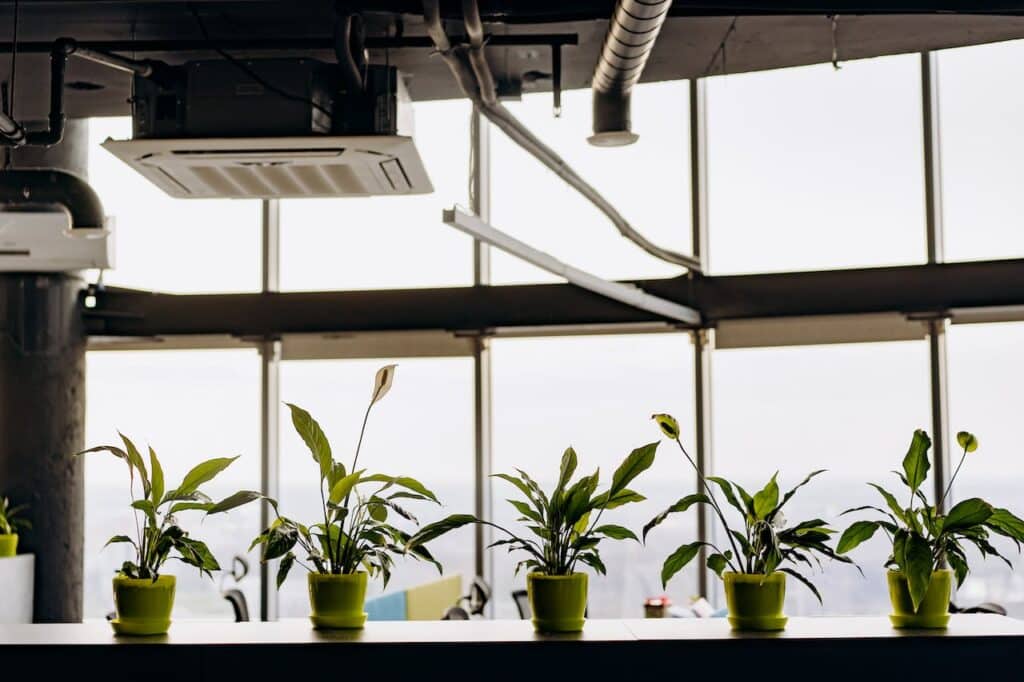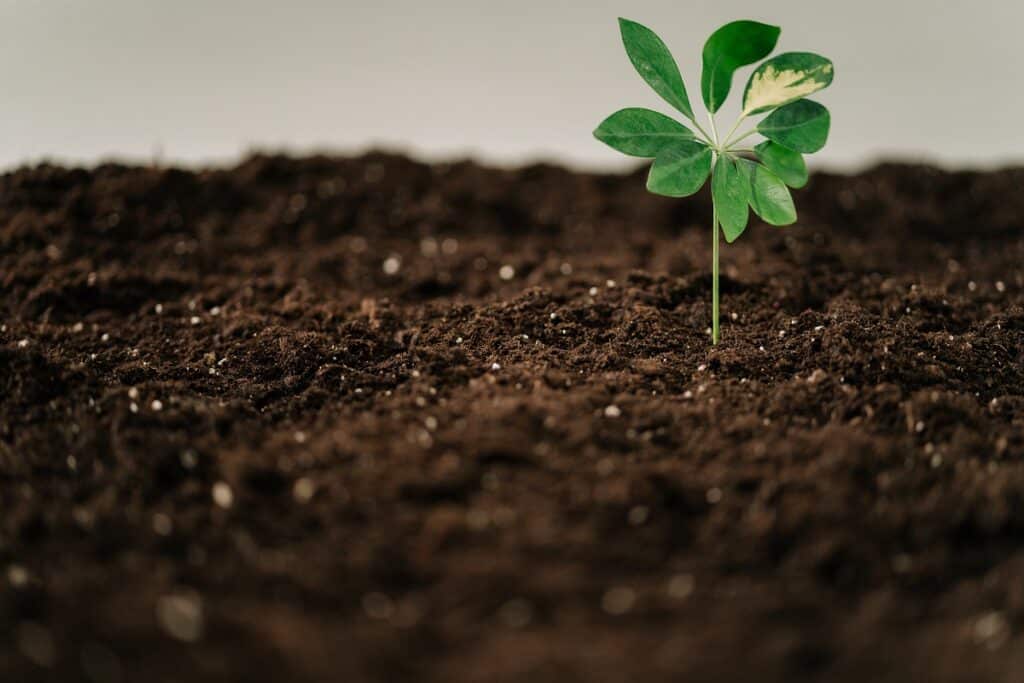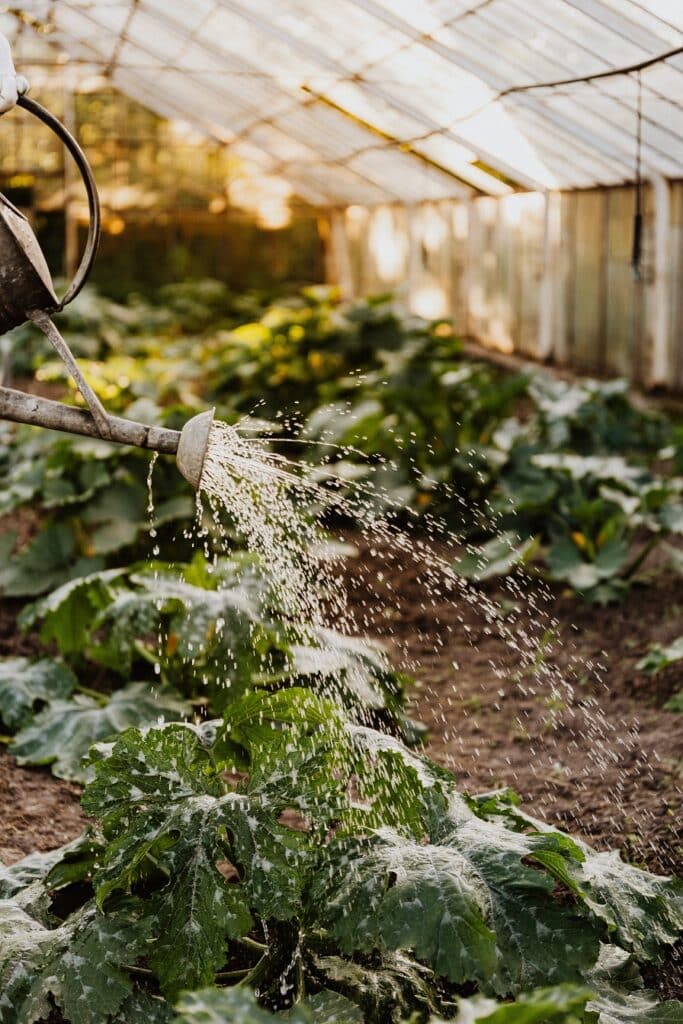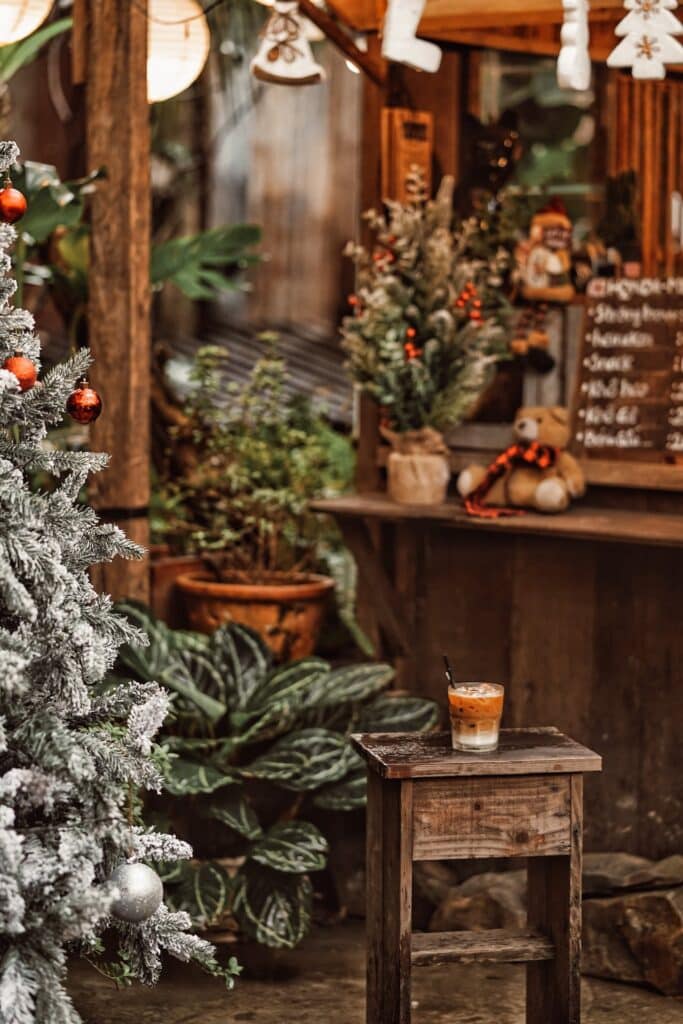Discover the most profitable indoor plants to grow and sell. Explore this comprehensive guide for insights on high-demand, low-maintenance indoor plants that can boost your income while adding a touch of nature to your life.
Want to turn your love for plants into a profitable venture? Look no further! This article unveils the secret to success by highlighting the 10 most lucrative indoor plants to grow. Whether you have a green thumb or are just starting out with your plant journey, these plants are sure to bring beauty and cash flow into your life. From trendy succulents to non-native orchids, you’ll discover most profitable indoor plants to grow and sell.
Learn how to care for them to ensure maximum profits. Get ready to transform your home into a thriving garden and your passion for plants into a profitable business!
Aloe Vera
Overview of Aloe Vera
Aloe vera, scientifically known as Aloe barbadensis, is a succulent plant that belongs to the family of Xanthorrhoeaceae. This evergreen perennial originates from the Arabian Peninsula. It is available worldwide for its multiple uses. Aloe vera is thick, fleshy leaves that store water, making it a resilient and low-maintenance indoor plant.
Aloe vera us best for its medicinal properties for centuries. The gel found within its leaves contains various bioactive compounds. These compounds are vitamins, minerals, enzymes, and amino acids. They own healing and soothing benefits. It is frequently helps to treat skin conditions like sunburns, cuts, and dermatitis. Additionally, aloe vera gel is best for moisturizing and anti-aging properties, making it a popular ingredient in skincare products.
Profitability of Aloe Vera Plant
Growing aloe vera can be a profitable venture due to its high demand in the market. The plant is relatively easy to cultivate, requiring minimal care and resources. This makes it an attractive option for aspiring plant growers or those looking to start a small business.
Aloe vera harvests carefully extracting the gel from mature leaves without damaging the plant. The gel is available into various products such as lotions, creams, and juices. These products have a significant market presence due to the growing popularity of natural and organic remedies.
Moreover, aloe vera plants propagates easily by separating the offsets, or “pups,” from the parent plant. This allows for consistent supply and the potential to expand the plant production over time. With proper marketing and distribution, aloe vera plants and their derived products can generate a steady income for growers.

Snake Plant
Overview of Snake Plant
The snake plant, scientifically known as Sansevieria trifasciata. It is a popular choice for indoor gardening due to its striking appearance and easy care requirements. Native to West Africa, this evergreen perennial is available for its long, upright leaves. It has variegated patterns of yellow and green.
Snake plants are highly adaptable and can thrive in various lighting conditions. It makes them suitable for both well-lit areas and low-light environments. This, coupled with their ability to withstand neglect and drought. It makes them an ideal choice for busy individuals or those lacking a green thumb.
Aside from its aesthetic appeal, the snake plant is best for its air-purifying properties. It scientifically proves to remove toxins like formaldehyde, benzene, trichloroethylene, and xylene from the air. It makes it an excellent addition to any indoor space.
Profitability of Snake Plant
Snake plants can be a profitable choice for indoor plant growers due to their increasing popularity and low maintenance requirements. The affordability and resilience of these plants attract a wide range of customers.
The snake plant’s ability to purify the air makes it a sought-after option among health-conscious individuals. It often seeks to have natural remedies for indoor pollution. This demand creates opportunities for growers to sell snake plants and capitalize on their air-cleansing properties.
Moreover, snake plants easily propagates through leaf cuttings or division. This enables growers to expand their stock quickly and potentially supply larger orders. The affordability and accessibility of snake plants make them marketable. They are ideal both as individual potted plants and as bulk orders for larger spaces. They are best for offices or commercial establishments.

Pothos
Overview of Pothos
Pothos, scientifically known as Epipremnum aureum, is a versatile and highly popular indoor plant. Native to the Solomon Islands, this trailing vine is known for its heart-shaped leaves. It comes in various shades of green, yellow, and cream.
Pothos is an undemanding plant, thriving in a wide range of light conditions from low to bright indirect light. It is also relatively tolerant of irregular watering. It makes excellent choice for those who may forget to water their plants or are new to gardening.
One notable feature of pothos is its ability to cleanse the air by removing pollutants like formaldehyde, benzene, and xylene. This makes it an excellent addition to homes, offices, and other indoor spaces.
Profitability of Pothos Plant
Growing pothos plants can be a profitable venture due to their popularity and ease of cultivation. The vibrant foliage and low-maintenance nature of pothos make it a desirable choice for both experienced plant enthusiasts and beginners.
Pothos propogates through stem cuttings, allowing growers to produce multiple plants from a single parent plant. This method enables growers to quickly expand their stock, meet customer demands, and potentially supply larger orders.
Furthermore, pothos plants often hangs or trailing plants, which adds to their visual appeal. With proper marketing and attractive display arrangements, pothos plants can attract a wide range of customers. From individual buyers to interior designers or commercial clients look to enhance the aesthetic of their spaces.

ZZ Plant
Overview of ZZ Plant
The ZZ plant, scientifically known as Zamioculcas zamiifolia. It is a popular choice for indoor gardening due to its striking appearance. The plant has an ability to thrive in low light conditions. Native to eastern Africa, this perennial plants are glossy, dark green leaves that are smooth and waxy to the touch.
The ZZ plant is highly adaptable. It can tolerate neglect, making it an excellent choice for individuals. It is also ideal for people who may not have inclination to care for high-maintenance plants. The plant has ability to withstand low-light environments and periods of drought. It makes it an ideal option for indoor spaces with limited natural light.
Profitability of ZZ Plant
The ZZ plant can be a profitable choice for indoor plant growers due to its increasing popularity. The plant has low maintenance requirements. Its unique appearance and ability to thrive in low-light conditions make it a sought-after plant. This plant is popular among both seasoned plant enthusiasts and beginners.
The ZZ plant’s resilience and adaptability make it an attractive option for individuals. It incorporates greenery into their living or working spaces without the hassle of intensive care. Its low water requirements and ability to tolerate lower light levels make it particularly suitable for offices, and other establishments.
Additionally, the ZZ plant is relatively easy to propagate through leaf or stem cuttings. It allows growers to expand their inventory and meet customer demands. With proper marketing and offering mature ZZ plants, growers can cater to a wide range of customers. However, people often look to add a touch of elegance and greenery to their indoor spaces.

Spider Plant
Overview of Spider Plant
The spider plant, scientifically known as Chlorophytum comosum, is a popular choice for indoor gardening due to its unique arching foliage and ease of care. Native to South Africa, this perennial plant has long, slender leaves that are typically with white or yellow stripes.
Spider plants are incredibly adaptable and can thrive in various light conditions, making them an ideal choice for indoor spaces with different lighting situations. Moreover, they are best for their air-purifying abilities, effectively removing toxins like formaldehyde and xylene from the air.
Profitability of Spider Plant
Spider plants can be a profitable option for indoor plant growers due to their visual appeal and air-purifying properties. Their distinctive arching foliage and variegated leaves make them an attractive choice for both individual buyers and commercial clients.
The spider plant’s ability to remove toxins from the air gives it an edge among health-conscious customers looking to create a clean and healthy living or working environment. Therefore, this demand opens opportunities for growers to market spider plants as decorative items. It also behave as a natural air purifiers.
Additionally, spider plants are easy to propagate through the production of plantlets, or “spiderettes,” that dangle from the mother plant. This allows growers to quickly expand their stock and meet customer demands. With proper cultivation techniques and marketing strategies, spider plants can become a profitable addition to any indoor plant business.

Money Tree
Overview of Money Tree
The money tree, scientifically known as Pachira aquatica, is a unique and visually appealing indoor plant that has gained popularity in recent years. Although, it is commonly referred to as a “money tree,” it is also the traditional money tree plant, Pachira glabra.
Native to Central and South America, the money tree is characterized by its braided trunk and glossy, palmate leaves that resemble a hand with fingers spread apart. The plant is believed to bring good luck and prosperity to its owners, making it a popular choice for home decor and gift-giving.
The money tree is relatively low-maintenance and can tolerate a wide range of light conditions, but it thrives best in bright, indirect light. It is also known for its ability to purify the air by removing common household toxins like formaldehyde and benzene.
Profitability of Money Tree
The money tree can be a profitable plant for indoor growers due to its unique appearance and symbolic value. Its braided trunk and vibrant foliage make it an attractive choice for individuals looking to create a visually appealing and auspicious atmosphere in their homes or offices.
The money tree’s association with good luck and prosperity adds to its marketability, making it a popular gift item or decorative plant for various occasions. This demand creates opportunities for growers to capitalize on the symbolic value of the money tree and cater to customers seeking a touch of fortune and abundance in their living spaces.
Moreover, the money tree is relatively easy to propagate through the planting of stem cuttings or seeds. This allows growers to quickly expand their stock and meet customer demands, whether it be for individual money tree plants or larger orders for events or commercial purposes. With proper care and marketing, the money tree can become a profitable addition to any indoor plant business.

Peace Lily
Overview of Peace Lily
The peace lily, scientifically known as Spathiphyllum, is a popular choice for indoor gardening due to its elegant white flowers and air-purifying abilities. Native to the tropical regions of Central and South America, this evergreen perennial is known for its glossy, dark green leaves and distinctive white flower spathes.
Peace lilies are highly adaptable and can thrive in various light conditions, although they prefer bright, indirect light. They are known for their ability to remove toxins like formaldehyde, benzene, and carbon monoxide from the air, making them an excellent choice for improving indoor air quality.
Profitability of Peace Lily
Peace lilies can be a profitable choice for indoor plant growers due to their visual appeal and air-purifying properties. The elegant white flowers and glossy green foliage of peace lilies make them a sought-after choice for individuals looking to add a touch of serenity and elegance to their living or working spaces.
The peace lily’s ability to remove toxins from the air adds to its marketability, especially among health-conscious individuals or those concerned about indoor pollution. This demand creates opportunities for growers to market peace lilies as not only decorative plants but also natural air purifiers.
Furthermore, peace lilies can be relatively easy to propagate through division, allowing growers to expand their inventory quickly. This enables them to meet customer demands for both individual peace lily plants and bulk orders for larger spaces like offices or commercial establishments. With proper cultivation practices and strategic marketing, peace lilies can become a profitable addition to any indoor plant business.

Bamboo Palm
Overview of Bamboo Palm
The bamboo palm, scientifically known as Chamaedorea seifrizii, is a popular choice for indoor gardening due to its graceful appearance and ability to thrive in low-light conditions. Native to Mexico and Central America, this evergreen palm is characterized by its slender, bamboo-like stems and finely divided, arching fronds.
Bamboo palms are highly adaptable and can tolerate a range of light conditions, from bright indirect light to lower light levels. However, they prefer partially shaded areas and can thrive in indoor spaces with limited natural light.
Aside from their ornamental value, bamboo palms are known for their air-purifying properties. They can effectively remove toxins like formaldehyde, benzene, and carbon monoxide from the air, making them a sought-after choice for improving indoor air quality.
Profitability of Bamboo Palm
Bamboo palms can be a profitable option for indoor plant growers due to their elegant appearance and air-purifying abilities. The graceful arching fronds and slender stems of bamboo palms make them an attractive choice for individuals looking to create a tropical and visually appealing atmosphere in their homes or offices.
The bamboo palm’s ability to remove toxins from the air adds to its marketability among health-conscious individuals or those seeking natural remedies for indoor pollution. This demand opens opportunities for growers to market bamboo palms as not only decorative plants but also air-purifying agents.
Moreover, bamboo palms can be relatively easy to propagate through division or by planting offshoots or seeds. This allows growers to expand their inventory quickly and potentially supply larger orders for landscaping or commercial projects. With proper cultivation techniques and effective marketing, bamboo palms can become a profitable addition to any indoor plant business.

Fiddle Leaf Fig
Overview of Fiddle Leaf Fig
The fiddle leaf fig, scientifically known as Ficus lyrata, is a highly popular indoor plant known for its large, leathery, and violin-shaped leaves. Native to tropical regions of West Africa, this evergreen tree is characterized by its lush foliage and sculptural appearance.
Fiddle leaf figs thrive best in bright, indirect light, making them ideal for well-lit indoor spaces. They are relatively low-maintenance but require specific care, including regular watering, adequate humidity, and occasional pruning to maintain their desired shape.
The fiddle leaf fig is a statement plant, often used as a focal point or centerpiece in interior design due to its impressive height and distinctive leaves. It adds a touch of elegance and sophistication to any room and has become a popular choice among plant enthusiasts and interior designers alike.
Profitability of Fiddle Leaf Fig
Growing fiddle leaf figs can be a profitable venture due to their increasing demand and status as a trendy indoor plant. Their sculptural leaves and impressive size make them a sought-after choice for individuals looking to create a visually stunning and chic atmosphere in their homes or offices.
The fiddle leaf fig’s popularity in interior design and social media platforms contributes to its marketability. It is often featured in home decor magazines and digital platforms, driving customer interest and demand. This presents opportunities for growers to sell fiddle leaf figs as focal point plants or statement pieces for interior spaces.
Additionally, fiddle leaf figs can be propagated through stem or leaf cuttings, allowing growers to expand their stock and meet customer demands. With proper care and cultivation techniques, growers can provide healthy and mature fiddle leaf figs to individual buyers, interior designers, or commercial clients. With a solid marketing strategy and attention to customer preferences, fiddle leaf figs can become a profitable addition to any indoor plant business.

Chinese Evergreen
Overview of Chinese Evergreen
The Chinese evergreen, scientifically known as Aglaonema, is a versatile and visually appealing indoor plant native to Southeast Asia. This evergreen perennial is highly regarded for its attractive foliage, featuring variegated leaves in shades of green, silver, and cream, often adorned with patterns or stripes.
Chinese evergreens are highly adaptable and can thrive in various light conditions, including low-light environments. They are also relatively low-maintenance, making them a popular choice for indoor gardening, especially among beginners or individuals with limited natural light.
Aside from their visual appeal, Chinese evergreens are known for their air-purifying capabilities. They can effectively remove toxins like formaldehyde and benzene from the air, contributing to a healthier indoor environment.
Profitability of Chinese Evergreen
Chinese evergreens can be a profitable choice for indoor plant growers due to their versatility and increasing demand. The vibrant foliage and varied patterns of Chinese evergreens make them an appealing option for individuals looking to add a touch of color and visual interest to their living or working spaces.
The Chinese evergreen’s ability to purify the air contributes to its marketability, particularly among health-conscious individuals or those seeking natural remedies for indoor pollution. This demand creates opportunities for growers to market Chinese evergreens as not only decorative plants but also air-cleansing agents.
Furthermore, Chinese evergreens are relatively easy to propagate through plant division or stem cuttings. This allows growers to quickly expand their inventory and meet customer demands for individual plants or larger orders for commercial establishments. With proper care and cultivation techniques, Chinese evergreens can become a profitable addition to any indoor plant business.

Final Words on the most profitable plants to grow and sell
Thus, each of the mentioned indoor plants, including Aloe Vera, Snake Plant, Pothos, ZZ Plant, Spider Plant, Money Tree, Peace Lily, Bamboo Palm, Fiddle Leaf Fig, and Chinese Evergreen, offers unique characteristics, benefits, and potential profitability. Whether you are interested in their aesthetic appeal, air-purifying properties, or ease of cultivation, these most profitable indoor plants to grow and sell. It proves to be popular choices for indoor gardening.
By understanding the overview and profitability of each plant, aspiring plant growers or business enthusiasts can make informed decisions about which plants to cultivate and market. With the right care, marketing strategies, and attention to customer preferences, these plants have the potential to become most profitable indoor plants to grow and sell. It makes a lucrative additions to any indoor plant business.




